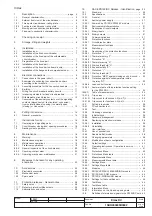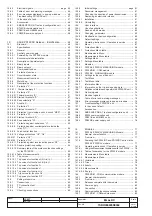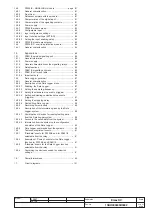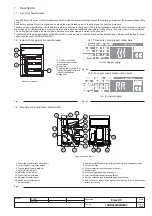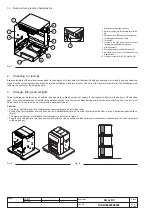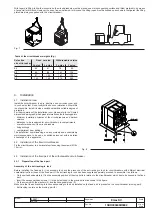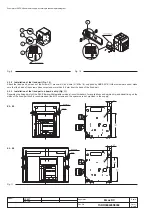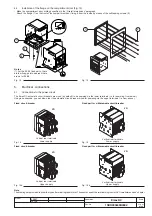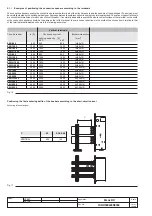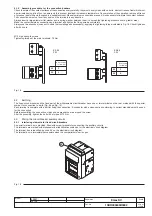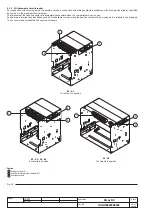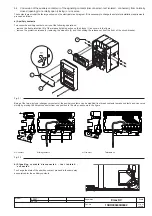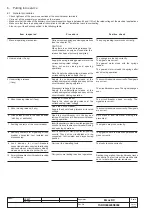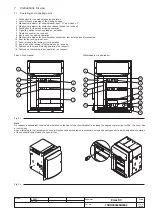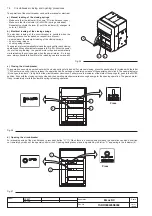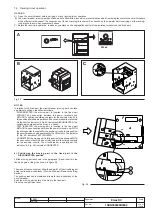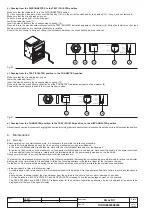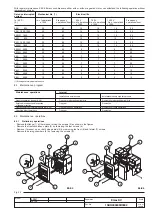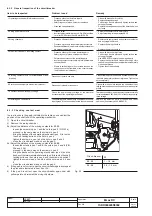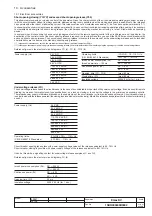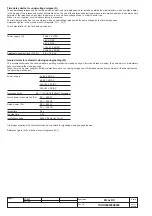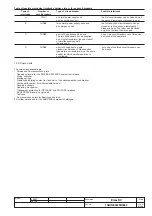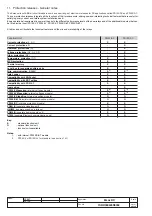
L3447
Emax DC
14/108
L3728
Doc. No.
Model
Apparatus
Scale
Page No.
1SDH000635R0002
6.
Putting into service
6.1 General procedures
– Check tightness of the power connections at the circuit-breaker terminals
– Carry out all the preparatory operations on the release
– Make sure that the value of the auxiliary circuit power supply voltage is between 85 and 110% of the rated voltage of the electrical applications
– Make sure that there is an adequate air circulation in the place of installation to avoid overheating
– Also carry out the checks specified in the following table.
Item inspected
1 Manual operating mechanism
2 Geared motor (if any)
3 Undervoltage release
(if any)
4 Shunt opening release (if any)
5 Shunt closing release (if any)
6 Circuit-breaker lock in the open position
(with key or padlocks)
7 Auxiliary contacts of the circuit-breaker
8 Auxiliary contacts for signalling circuit-
breaker connected, test isolated and
disconnected
9 Lock devices for circuit-breakers
connected and disconnected. Interlocking
devices between circuit-breakers side by
side and one on top of another (if any)
10 For withdrawable circuit-breakers: racking
-in/out device
Procedure
Carry out some opening and closing operations
(see the chapter 7.2).
CAUTION
When there is an undervoltage release, the
circuit-breaker can only be closed after the
release has been electrically energized.
Supply the spring loading geared motor at the
corresponding rated voltage.
Carry out some closing and opening
operations.
Note. Supply the undervoltage release at the
corresponding rated voltage (if any).
Supply the undervoltage release at the
corresponding rated voltage and carry out the
circuit-breaker closing operation.
Disconnect voltage to the release.
Supply the undervoltage release at the
corresponding rated voltage and carry out the
circuit-breaker closing operation.
Close the circuit-breaker.
Supply the shunt opening release at the
corresponding rated voltage.
Open the circuit-breaker.
Supply the shunt closing release at its rated
voltage.
Open the circuit-breaker, turn the key and
remove it from its seat. Attempt circuit-breaker
closing operation.
Insert the auxiliary contacts in suitable signalling
circuits. Carry out some circuit-breaker closing
and opening operations.
Insert the auxiliary contacts in suitable signalling
circuits. Then put the circuit-breaker in the
connected, test isolated and disconnected
position.
Carry out the operating tests.
Carry out some racking-in and out operations.
Positive check
The spring loading lever moves correctly.
The springs are loaded correctly.
The signals are correct.
The geared motor stops with the springs
loaded.
The geared motor reloads the springs after
each closing operation.
The circuit-breaker closes correctly. The signals
are correct.
The circuit-breaker opens. The signal changes
over.
The circuit-breaker opens correctly. The
signals are correct.
The circuit-breaker closes correctly. The signals
are correct.
Both manual and electrical closing are
prevented.
The signals are given correctly.
The signals due to the relative operations are
given correctly.
The locks function correctly.
Racking-in operation: the circuit-breaker racks
in correctly. The first turns of the crank handle
do not meet with particular resistance.


